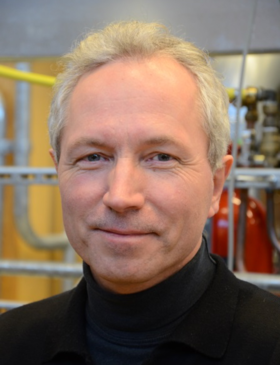Being relevant is key to dissemination

The energy field can make large contributions to a sustainable future – which is the reason why Björn Palm from Department of Energy Technology goes to work every morning. Being relevant to the industry is the start of getting the research disseminated, he says, “and eventually making an impact, means that we have succeeded in making a difference in some way”.

As professor at the Department of Energy Technology Björn Palm knows almost all there is to know about heating and cooling of buildings, and how this connects to the energy system as a whole. At his division, they specifically work on making heat pumps and refrigeration equipment more efficient and how to avoid using refrigerants which have negative impact on the environment. And the work that is being carried out by Björn Palm and his team, is widely known.
“I think we are all driven by an urge to contribute to a more sustainable future. We are eager to show our results as we believe they can make a difference. Making an impact means we have succeeded with this in some way.”
Do you have a clear strategy for spreading your research results and getting a bigger impact
“Most important is to identify research questions which are interesting to answer. Almost always we have industry involved and this is a way to get feedback on the selection of research questions. In the end, results of our research will be implemented by industry. One hundred years ago a new type of refrigerator was invented at the department. The invention was commercialized by Electrolux who sold it worldwide. The development of domestic heat pumps in Sweden is also at least in part a result of research here.”
“We have a Newsletter where we highlight new research projects and new publications. Since several years we also have a standing column in one of the Swedish technical journals where we inform a broader audience about our research. Of course, we participate in technical meetings where we meet the industry.“
What are the key success factors to become highly-cited?
“The key success factors are to have an interesting message to tell, to tell it in a way which the audience understands and believes, and to tell it through a journal/scientific conference which is highly ranked, i.e. followed by many people.”
How do you usually publish the papers? Do you initiate it or leave it to your PhD students or postdocs and just review it?
“The Phd students need the publications to graduate. Typically, the research projects are defined by me/the senior researcher. In the application for funding there are research questions which should be answered and a description of work packages to be performed. This is the guideline when discussing, during supervision sessions, what to do. Based on this, subjects for papers are formulated and research tasks defined. The tasks and the progress are of course discussed regularly and the supervisor contributes with ideas. Ideally, the student should at the end be able to write a draft of the paper him/herself. Of course, the text is checked and discussed before it is ready for publication.“
How do you select the journal where the paper will be published?
“I prefer publishing in a specialized journal of good impact, even if this means that the audience is smaller and the impact factor perhaps a bit lower than for some broad journals. The review is more likely to be good, and we reach the right audience.“
Do you see any trends/changes in how you work on your scientific impact that can be followed by your colleagues?
“We know that review papers are highly cited. With more time I would focus more on this. “
Do you use social media for spreading your results?
“No.”
Text: Anna Gullers
